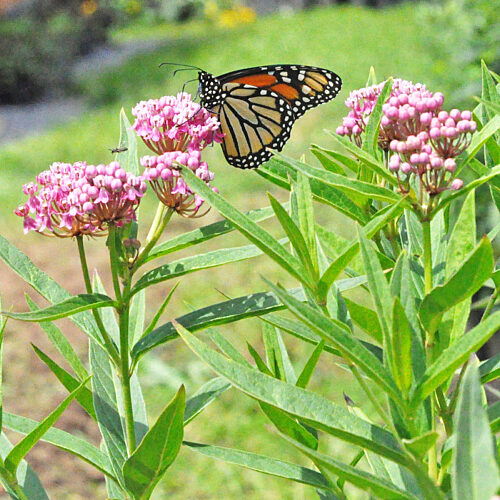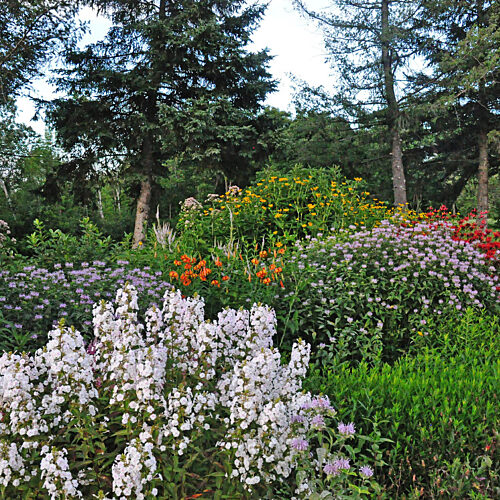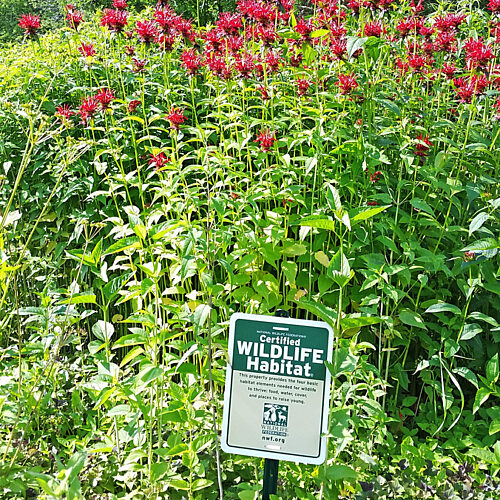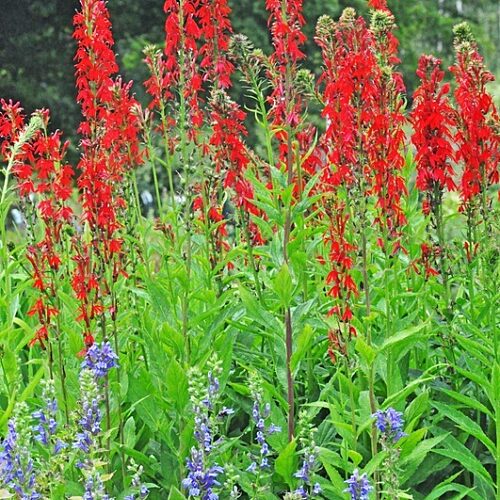Will this be the year you decide to go native? Maybe you’ve brought the family to Landis’s Native Plant Trail, smartphones in hand, to mine curator Ed Miller’s vast store of knowledge through the QR codes on our interpretative signs. Perhaps you’ve gone with Ed during a Landis plant sale for a memorable and informative tour of the trail. If so, you might now be ready to add natives to your own landscape.
Chris and Emily DeBolt, proprietors of Fiddlehead Creek Nursery in Washington County, manage 17 beautiful acres devoted to plants native to New York State. Both are committed to spreading their message about the benefits of landscaping with native plants and the dangers of invasive species to homeowners, organizations, and communities. Their nursery specializes in plants for sustainable landscapes and for protecting the quality of local waters with rain gardens and shoreline buffers. They also supply natives for bird, butterfly, and pollinator gardens; ferns and spring ephemerals; and much more.
Fiddlehead Creek has been designated as a certified wildlife habitat through the National Wildlife Federation and a monarch butterfly way station certified by Monarch Watch. It is also part of the Million Pollinator Gardens initiative. The DeBolts’ professional network also includes partnerships with such conservation and educational organizations as the North American Native Plant Society, the Lady Bird Johnson Wildflower Center, and the New York Flora Association. Chris and Emily are Certified Nursery Landscape Professionals (CNLP) and serve as directors for Region 3 of the New York State Nursery and Landscape Association. Their services include native plant consultation and garden design, as well as educational presentations for garden clubs and other organizations.
You may recall the DeBolts’ plants and signage at a Landis plant sale. As an experienced environmental educator, Emily knows the value of both text and photographic images when introducing new plants and horticultural concepts to gardeners. “There’s a native for everything,” she says. Their website, www.fiddleheadcreek.com, which includes native alternatives to invasives and other undesirables, helps you plan additions to an existing garden or create a new space, such as a rain garden. [Check out Emily’s article about rain gardens in this newsletter.]
Why go native? Aside from the natural beauty of the native plants, the environmental benefits are plentiful: they supply both food and habitat for wildlife; are readily adaptable to local conditions; use less fertilizer and pesticides; are lower maintenance; develop deep root systems that absorb and filter storm water runoff; and help stop the spread of invasive plants. What better way to expand your family’s oasis and help ensure local biodiversity?
We look forward to the return of Fiddlehead Creek at the Arboretum’s Fall Plant Sale. Though their nursery is growing, they remain a small, family-owned business where Emily, Chris, young son Carter, and even Grandma Beryl share space at the potting table to ensure that Fiddlehead Creek is ready to help you “go native”.
Visit the Fiddlehead Creek website at www.fiddleheadcreek.com for more information about the nursery.
Click Tap to view full size






